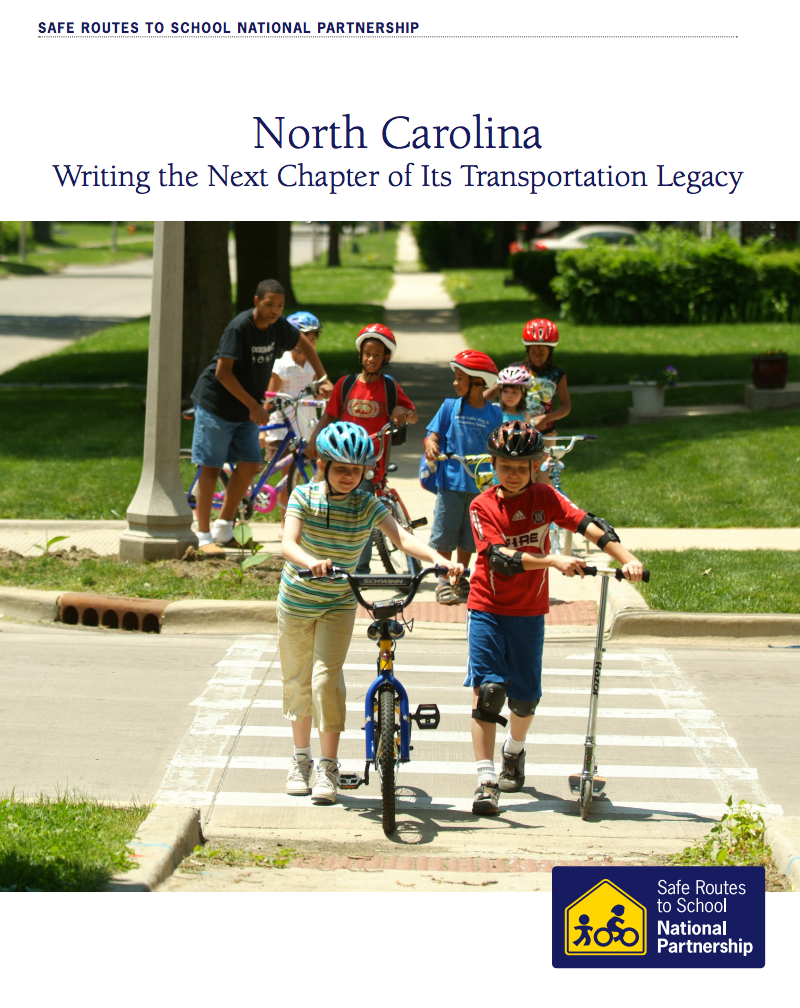 This week, the Safe Routes Partnership published a new report, “North Carolina: Writing the Next Chapter of Its Transportation Legacy." The report is being released as the newest NC General Assembly convenes in Raleigh, and calls for state legislators and agencies to consider the wide-reaching impacts of transportation policy and spending, particularly regarding non-motorized transportation. The report demands much greater consideration for bicyclists and pedestrians in our state, particularly in minority communities. If NCDOT and the General Assembly desire a transportation legacy that makes our state a healthy, prosperous, and safe place to live, they should start with a thorough review of the statistics and recommendations in the new report.
This week, the Safe Routes Partnership published a new report, “North Carolina: Writing the Next Chapter of Its Transportation Legacy." The report is being released as the newest NC General Assembly convenes in Raleigh, and calls for state legislators and agencies to consider the wide-reaching impacts of transportation policy and spending, particularly regarding non-motorized transportation. The report demands much greater consideration for bicyclists and pedestrians in our state, particularly in minority communities. If NCDOT and the General Assembly desire a transportation legacy that makes our state a healthy, prosperous, and safe place to live, they should start with a thorough review of the statistics and recommendations in the new report.
North Carolina is a dangerous place for bicyclist and pedestrians, as illustrated by alarming safety and spending statistics set forth in the Safe Routes Partnership’s report. North Carolina ranks in the top 20% of states for pedestrian and bicyclist fatality rates. Meanwhile, the state has done a lackluster job in spending funds available to address the infrastructure deficiencies that have led to these safety problems. For example, “the state sits on a stockpile of more than $14.9 million in unspent Safe Routes to School funding meant to make it safe for children to walk and bicycle to and from school”.
One glimmer of hope is found in recent state-level policies which promise to alleviate bicycle and pedestrian safety concerns. The NC Department of Transportation has a Complete Streets Policy, and Governor Pat McCrory’s recently-released 25-year vision plan calls for continued bicycle and pedestrian investment and implementation of Complete Streets. Yet other policies, like the Strategic Transportation Investment law (HB 817), place severe restrictions on spending for bicycle and pedestrian infrastructure, undermining any good faith attempts to alleviate these concerns which might arise from more-positive state level policy. Funding levels for non-motorized transportation continue to lag behind the other modes, and don’t come close to meeting the needs. Most-concerning of all are the disparities set forth in the Safe Routes Partnership report concerning communities of color. Safety statistics show that pedestrians and bicyclists in low-income and minority communities are significantly more at risk of death.
It’s time for NCDOT and the General Assembly to speed up expenditure of existing bicycle and pedestrian funding, particularly in the Safe Routes to School program, and set aside a portion of Transportation Alternatives Program funds specifically for these needs. Special attention must be paid to lower income and minority communities where bicyclists and pedestrians face much higher safety risks than in other communities. The “good roads state” is becoming an unwelcome, unsafe place for bicyclists and pedestrians. It’s time to turn that around and rewrite the future of transportation in North Carolina.


